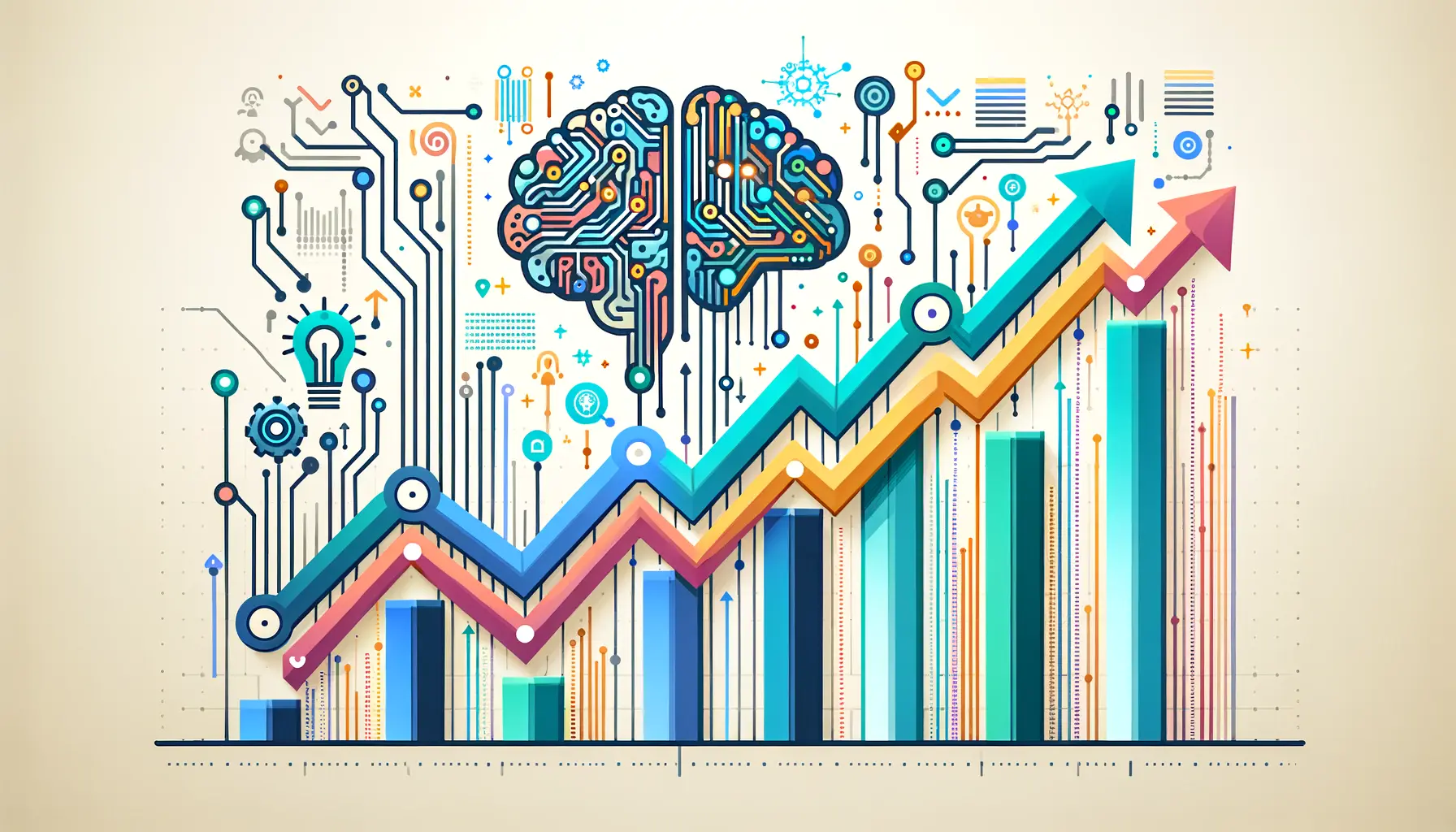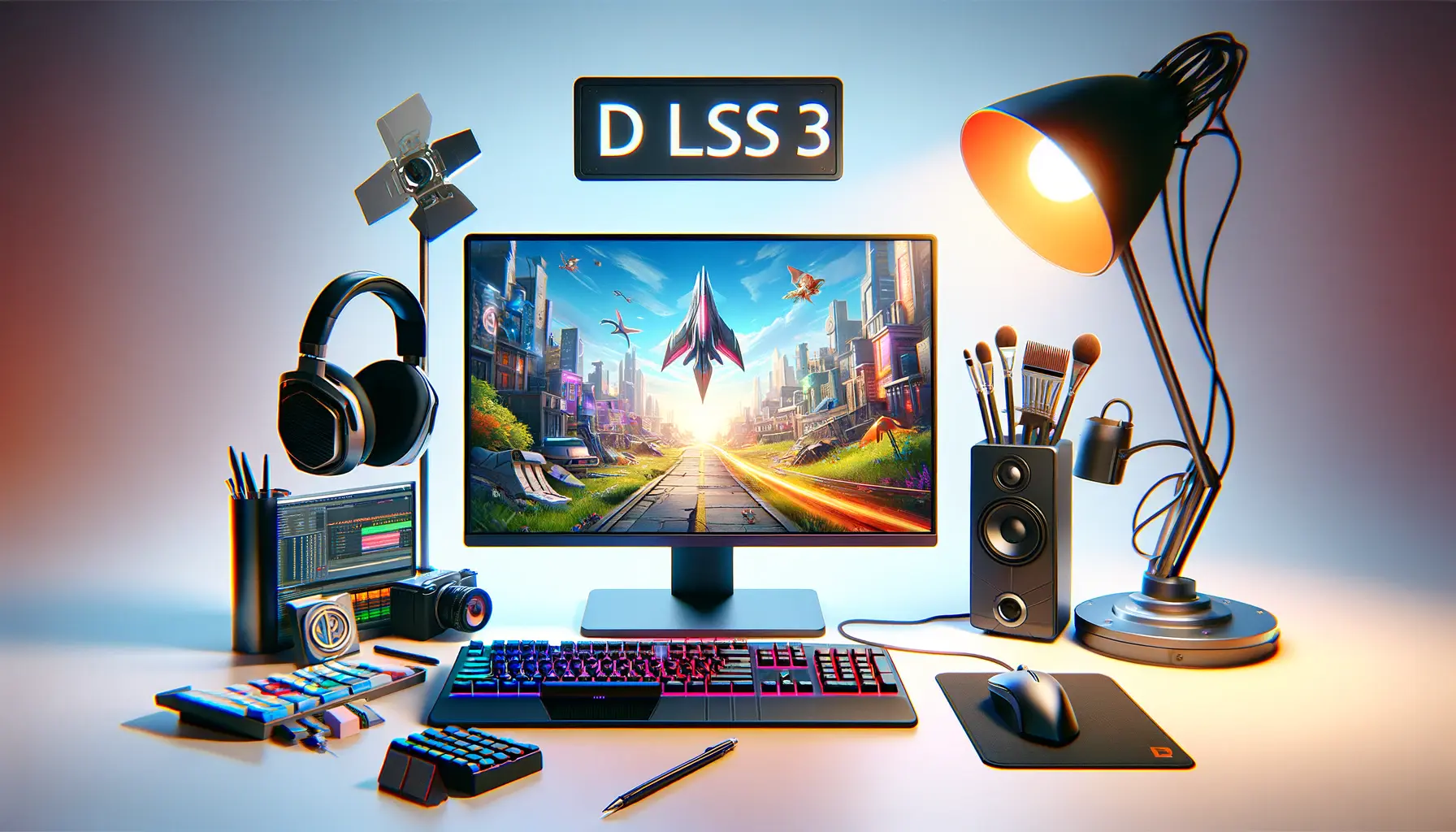The landscape of artificial intelligence (AI) is constantly evolving, with new technologies emerging that promise to revolutionize the way businesses interact with their customers.
Among these innovations, Grok AI stands out as a particularly intriguing development.
This AI technology, developed by xAI, a company led by Elon Musk, has garnered attention for its unique approach to conversational AI, blending advanced machine learning capabilities with a distinctive personality.
Grok AI’s adoption by brands marks a significant shift in the digital marketing and customer service sectors.
By integrating Grok into their operations, companies are not just leveraging AI; they are embracing a system designed to understand and interact with users in a more human-like manner.
This transition signifies a broader trend towards more personalized and engaging customer experiences, facilitated by AI technologies that can process and respond to information in real-time.
- Understanding Grok AI’s Unique Appeal
- Strategies for Implementing Grok AI
- Case Studies: Grok AI in Action
- Overcoming Challenges with Grok AI
- Future Trends in AI Adoption
- Building a Skilled Workforce for AI Integration
- Maximizing ROI with Grok AI
- Embracing the Future with Grok AI
- Grok AI Adoption by Brands: FAQs
Understanding Grok AI’s Unique Appeal
The core of Grok AI’s appeal lies in its ability to process vast amounts of data in real-time, offering responses that are not only accurate but also imbued with a sense of personality.
This capability is a departure from traditional AI models that often deliver generic, scripted responses.
Grok’s approach is more dynamic, allowing for interactions that feel more natural and engaging to users.
Another aspect of Grok AI that brands find attractive is its integration with the X platform (formerly known as Twitter).
This integration offers a competitive edge by providing access to a wealth of real-time and historical data.
Brands can utilize this data to inform their interactions with customers, ensuring that responses are not only relevant but also timely and contextually aware.
Benefits for Customer Engagement
The adoption of Grok AI by brands has significant implications for customer engagement strategies.
By employing an AI system capable of delivering personalized and nuanced responses, companies can enhance the customer experience, fostering a deeper sense of loyalty and satisfaction.
This level of engagement is particularly valuable in today’s digital landscape, where consumers expect fast, efficient, and personalized interactions with brands.
Moreover, Grok AI’s ability to learn from interactions means that it can continuously improve its responses over time.
This learning capability ensures that the AI remains relevant and effective, even as consumer preferences and behaviors evolve.
For brands, this means that investing in Grok AI is not just about addressing current customer service needs but also about future-proofing their engagement strategies.
The integration of Grok AI into brand strategies represents a forward-thinking approach to customer engagement, leveraging the latest in AI technology to create more meaningful and personalized interactions.
Strategies for Implementing Grok AI
As brands consider incorporating Grok AI into their operations, developing a strategic approach is crucial for maximizing the benefits of this technology.
The implementation process involves several key steps, each designed to ensure that Grok AI aligns with the company’s specific goals and customer engagement objectives.
Integration with Existing Systems
One of the first considerations for brands is the integration of Grok AI with their existing digital infrastructure.
This process involves assessing current customer service platforms, CRM systems, and other digital tools to determine how Grok can complement and enhance these resources.
Effective integration ensures that Grok AI can access the necessary data to provide personalized responses and that its capabilities are seamlessly incorporated into the customer experience.
For many brands, this might involve working closely with IT departments or external technology partners to develop integration plans that minimize disruption to existing operations while maximizing the potential of Grok AI.
Training and Customization
Despite Grok AI’s advanced learning capabilities, initial training and customization are essential for tailoring the system to a brand’s specific needs.
This process involves:
- Feeding Grok AI with relevant data, including product information, brand guidelines, and typical customer queries.
- Customizing response styles to match the brand’s voice and tone, ensuring consistency across all customer interactions.
- Setting parameters for Grok’s humor and personality traits to align with the brand’s image and customer expectations.
Training Grok AI is an ongoing process, with continuous adjustments needed as the AI learns from interactions and as the brand’s strategies evolve.
Monitoring and Optimization
After implementation, continuous monitoring of Grok AI’s performance is crucial for identifying areas for improvement.
Brands should establish metrics for success, such as customer satisfaction scores, resolution times, and engagement rates, to evaluate the impact of Grok AI on their customer service operations.
Optimization efforts might involve refining Grok’s responses based on customer feedback, adjusting integration points with other systems, or expanding the range of queries that Grok can handle.
Regular reviews of Grok AI’s performance help ensure that the technology continues to meet the brand’s objectives and customer expectations.
Adopting Grok AI is not a set-it-and-forget-it solution but a dynamic component of a brand’s digital ecosystem that requires ongoing attention and refinement.
Case Studies: Grok AI in Action
Examining real-life applications of Grok AI provides valuable insights into its potential impact on brand strategies and customer engagement.
While specific case studies involving Grok AI are proprietary and closely guarded by the companies that use them, hypothetical scenarios based on its capabilities can illustrate how brands might leverage this technology.
Enhancing Customer Support
A leading e-commerce platform integrates Grok AI to manage its customer support inquiries.
By accessing real-time and historical customer data, Grok AI personalizes interactions, providing accurate product recommendations and resolving issues efficiently.
This approach leads to a significant reduction in response times and an increase in customer satisfaction scores.
The platform continuously monitors Grok AI’s interactions, using customer feedback to refine its responses and ensure they remain aligned with brand values.
Personalizing Marketing Campaigns
An international hotel chain employs Grok AI to personalize its email marketing campaigns.
By analyzing customer preferences and past booking history, Grok AI crafts personalized messages that highlight relevant offers and destinations.
This strategy results in higher open rates and increased bookings, demonstrating the power of personalized content.
The hotel chain regularly updates Grok AI with new promotions and destination information, ensuring that its marketing messages remain fresh and engaging.
Streamlining Operations
A technology company integrates Grok AI into its internal operations to streamline project management and internal communications.
Grok AI assists in assigning tasks based on team members’ current workloads and expertise, facilitating more efficient project completion.
Additionally, it provides real-time updates on project progress and identifies potential bottlenecks, allowing for timely interventions.
This internal application of Grok AI not only improves operational efficiency but also enhances team collaboration and job satisfaction.
- Customer Support Transformation: A retail brand integrates Grok AI to handle first-level customer inquiries, significantly reducing wait times and freeing human agents to tackle more complex issues.
- Marketing Personalization: A streaming service uses Grok AI to analyze viewing habits and personalize content recommendations, increasing viewer engagement and subscription renewals.
- Operational Efficiency: A logistics company employs Grok AI for route optimization and real-time delivery updates, improving delivery times and customer satisfaction.
These hypothetical scenarios underscore Grok AI’s versatility across various applications, from customer service and marketing to internal operations, highlighting its potential to transform brand strategies and enhance customer engagement.
Overcoming Challenges with Grok AI
While the adoption of Grok AI presents numerous opportunities for brands to enhance their customer engagement and operational efficiency, it also introduces several challenges.
Addressing these challenges is crucial for brands to fully leverage Grok AI’s capabilities and ensure its successful integration into their strategies.
Data Privacy and Security
The use of AI technologies like Grok AI raises significant concerns regarding data privacy and security.
Brands must navigate the complexities of collecting, storing, and processing customer data in compliance with global data protection regulations such as GDPR and CCPA.
Ensuring the security of customer data against breaches is paramount, as any lapse can lead to severe reputational damage and legal consequences.
To mitigate these risks, brands should implement robust data governance policies and ensure that Grok AI’s data processing mechanisms comply with all relevant laws and regulations.
Regular security audits and the adoption of advanced encryption technologies can further safeguard customer data.
Ensuring Accurate and Appropriate Responses
Grok AI’s ability to generate responses with a degree of personality and humor is a double-edged sword.
While it can make interactions more engaging, there is also the risk of generating inappropriate or offensive content.
Brands must carefully calibrate Grok AI’s personality traits and monitor its responses to ensure they align with the brand’s values and public image.
Implementing filters and oversight mechanisms can help prevent undesirable responses.
Additionally, continuous training and refinement of Grok AI’s algorithms based on real-world interactions will improve its understanding of appropriate content boundaries.
Integration and Scalability
Integrating Grok AI into existing digital ecosystems can be challenging, especially for brands with complex infrastructures.
Ensuring compatibility with current systems and scalability to handle increasing volumes of interactions is essential for a smooth implementation process.
Brands should approach integration with a phased strategy, starting with pilot projects to identify potential issues and gradually expanding Grok AI’s role within their operations.
Leveraging cloud technologies and API-based integrations can enhance scalability and flexibility.
- Developing a comprehensive data privacy framework to address security concerns.
- Creating guidelines and oversight processes to ensure Grok AI’s responses remain appropriate and on-brand.
- Adopting a modular approach to integration to facilitate scalability and adaptability.
Successfully navigating these challenges requires a proactive and strategic approach, focusing on safeguarding data privacy, ensuring content appropriateness, and achieving seamless integration and scalability.
Future Trends in AI Adoption
The rapid evolution of AI technologies like Grok AI is shaping future trends in brand strategies and customer engagement.
As AI continues to advance, several key trends are emerging that will define the next wave of AI adoption across industries.
Understanding these trends is crucial for brands looking to stay ahead in the digital transformation journey.
Increased Personalization
One of the most significant trends is the move towards even greater personalization in customer interactions.
AI technologies are becoming increasingly sophisticated at analyzing customer data and delivering customized experiences.
Grok AI’s ability to understand and respond to individual user preferences in real-time will set a new standard for personalization, pushing brands to adopt AI solutions that can offer a similar level of individualized engagement.
This trend towards personalization will extend beyond marketing and customer service to include product development, content creation, and more, as brands seek to tailor every aspect of the customer experience to individual needs and preferences.
Seamless Omnichannel Experiences
As customers interact with brands across multiple channels, providing a seamless omnichannel experience becomes increasingly important.
AI technologies like Grok AI will play a pivotal role in unifying these interactions, ensuring that customers receive consistent and relevant communication whether they are on social media, a brand’s website, or in a physical store.
The integration of AI across all customer touchpoints will enable brands to gather comprehensive insights into customer behavior, further enhancing the ability to deliver personalized experiences and anticipate customer needs.
Enhanced Operational Efficiency
AI adoption is not limited to customer-facing applications.
Behind the scenes, AI technologies are streamlining operations, from supply chain management to human resources.
Grok AI and similar systems can automate routine tasks, optimize workflows, and provide decision-makers with actionable insights, leading to significant improvements in operational efficiency and cost savings.
This trend towards operational AI will accelerate as brands recognize the benefits of automating not just customer interactions but also internal processes, freeing up human resources to focus on more strategic and creative tasks.
- Personalization will become even more sophisticated, with AI providing hyper-customized experiences.
- Omnichannel strategies will be enhanced by AI, offering customers a seamless journey across all platforms.
- Operational efficiency will see significant gains from AI automation, transforming business processes and reducing costs.
The future of AI adoption is characterized by a deepening integration of AI technologies like Grok AI into both customer-facing and operational aspects of businesses, driving unprecedented levels of personalization, efficiency, and customer satisfaction.
Building a Skilled Workforce for AI Integration
The successful adoption of Grok AI and similar technologies necessitates not only technological readiness but also a workforce skilled in AI integration and management.
As AI becomes more embedded in brand strategies and operations, the demand for professionals who can navigate the complexities of AI technology will surge.
This shift presents both challenges and opportunities for businesses and employees alike.
Upskilling and Reskilling Initiatives
One of the primary strategies for building a skilled workforce is through upskilling and reskilling initiatives.
Companies must invest in training programs that equip their employees with the necessary knowledge and skills to work effectively with AI technologies.
This includes understanding AI capabilities, data analysis, ethical considerations, and the ability to interpret AI-generated insights for strategic decision-making.
Such initiatives not only prepare the workforce for the future but also foster a culture of continuous learning and innovation within the organization.
By empowering employees to enhance their skills, companies can ensure they remain competitive in an increasingly AI-driven market.
Collaboration Between Humans and AI
As AI technologies like Grok AI become more advanced, the nature of work will evolve to emphasize collaboration between humans and AI.
This collaborative approach leverages the strengths of both humans and AI, with AI handling data processing and pattern recognition tasks, while humans focus on creative, strategic, and interpersonal aspects of work.
Developing a workforce that can effectively collaborate with AI requires a shift in mindset, from viewing AI as a tool to seeing it as a partner in achieving business goals.
This shift will necessitate changes in organizational structures, job roles, and performance metrics to support and encourage human-AI collaboration.
- Implementing comprehensive upskilling and reskilling programs to prepare employees for AI integration.
- Fostering a culture of innovation and continuous learning to keep pace with AI advancements.
- Reimagining work processes and roles to facilitate effective human-AI collaboration.
The transition to an AI-integrated workforce is not without its challenges, but by prioritizing skill development and fostering a collaborative work environment, companies can unlock the full potential of AI technologies like Grok AI to drive growth and innovation.
Maximizing ROI with Grok AI
Investing in Grok AI represents a significant opportunity for brands to enhance their customer engagement, streamline operations, and ultimately, drive growth.
However, to truly maximize the return on investment (ROI) from Grok AI, companies must adopt a strategic approach that encompasses careful planning, implementation, and ongoing optimization.
Strategic Implementation
The first step in maximizing ROI is the strategic implementation of Grok AI.
This involves identifying specific areas within the business where Grok AI can have the most significant impact, such as customer service, marketing personalization, or operational efficiency.
By focusing on these high-impact areas, companies can ensure that their investment in Grok AI delivers tangible benefits.
Moreover, a phased implementation approach allows for the gradual integration of Grok AI, enabling companies to manage risks and make adjustments based on early outcomes.
This careful, strategic rollout helps in optimizing resource allocation and ensuring that the AI implementation aligns with overall business objectives.
Data-Driven Decision Making
Grok AI’s ability to process and analyze vast amounts of data in real-time offers unprecedented opportunities for data-driven decision making.
By leveraging Grok AI’s insights, companies can make more informed strategic decisions, from product development to market entry strategies.
However, to truly capitalize on this capability, companies must establish robust data analytics frameworks that can translate AI-generated insights into actionable strategies.
This involves investing in analytics talent, tools, and processes that can harness the power of AI to drive business growth.
Continuous Optimization
To sustain the ROI from Grok AI, continuous optimization of AI strategies is essential.
This includes regularly updating the AI models with new data, refining AI interactions based on customer feedback, and exploring new applications of AI technology within the business.
Continuous optimization ensures that Grok AI remains aligned with evolving business goals and market conditions, thereby maximizing its contribution to the company’s success.
Additionally, fostering a culture of innovation and experimentation can help companies stay ahead of the curve in leveraging AI for competitive advantage.
- Identifying high-impact areas for Grok AI implementation to ensure focused and effective integration.
- Investing in data analytics capabilities to turn AI-generated insights into strategic actions.
- Adopting a culture of continuous optimization and innovation to keep the AI strategy aligned with business objectives.
Assuming that the initial implementation of Grok AI will continue to deliver value without ongoing optimization and adaptation is a common misconception that can undermine ROI. Companies must actively manage and evolve their AI strategies to realize the full potential of their investment.
Embracing the Future with Grok AI
The journey of integrating Grok AI into brand strategies signifies a pivotal shift towards more dynamic, personalized, and efficient customer interactions and operational processes.
The adoption of Grok AI by brands not only highlights the growing importance of AI in shaping the future of business but also underscores the potential of AI to transform customer engagement and operational efficiency on a profound level.
The Path to Personalization and Efficiency
In the era of digital transformation, the adoption of Grok AI stands as a testament to the relentless pursuit of innovation in customer service and brand interaction.
By harnessing the power of Grok AI, brands can achieve unprecedented levels of personalization, offering customers experiences that are not just tailored to their preferences but also enriched with the kind of engagement that fosters loyalty and satisfaction.
Moreover, Grok AI’s impact extends beyond customer-facing applications, offering brands the tools to streamline their operations.
From automating routine tasks to optimizing decision-making processes, Grok AI is redefining what it means to operate efficiently in the digital age.
Strategies for Success
- Strategic implementation focusing on high-impact areas ensures that Grok AI delivers tangible benefits aligned with business objectives.
- Data-driven decision-making, powered by Grok AI’s insights, enables more informed and strategic business choices.
- Continuous optimization of Grok AI applications ensures that the technology remains relevant and effective in the face of evolving market conditions and business goals.
As we look to the future, the role of Grok AI in shaping brand strategies and customer experiences is poised to grow.
The brands that succeed will be those that not only adopt Grok AI but also commit to continuously evolving their approach to leverage the full spectrum of benefits that AI offers.
In doing so, they will not only enhance their competitive edge but also set new standards for what is possible in customer engagement and operational excellence.
In conclusion, the adoption of Grok AI by brands marks a significant milestone in the ongoing evolution of artificial intelligence in business.
By embracing Grok AI, companies can unlock new opportunities for growth, innovation, and connection with their customers, paving the way for a future where AI and human creativity converge to create unparalleled experiences and efficiencies.
Grok AI Adoption by Brands: FAQs
Explore common questions about how brands are leveraging Grok AI to revolutionize customer engagement and operational efficiency.
Grok AI is a conversational AI developed by Elon Musk’s company, xAI, designed to interact with users in a more human-like manner.
Grok AI stands out for its real-time data processing and unique personality, offering personalized and engaging user interactions.
Brands can achieve higher customer satisfaction, personalized marketing, and improved operational efficiency with Grok AI.
Yes, Grok AI is designed for seamless integration with a brand’s existing digital ecosystem to enhance customer service and operations.
Challenges include ensuring data privacy, maintaining brand consistency in AI interactions, and integrating AI into existing systems.
Success requires strategic implementation, continuous optimization based on feedback, and investment in employee training for AI management.
Trends include increased personalization, seamless omnichannel experiences, and the use of AI for operational efficiency improvements.
Grok AI enables brands to offer highly personalized and interactive experiences, significantly enhancing customer engagement and loyalty.











